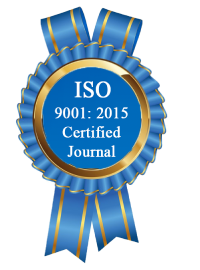| All | Since 2020 | |
| Citation | 172 | 110 |
| h-index | 7 | 5 |
| i10-index | 1 | 0 |
WJERT Citation 
Login
News & Updation
Abstract
USING MIRNA-185 AS BIOMARKERS FOR DIAGNOSIS CHRONIC HEPATITIS B VIRUS INFECTION IN AL-DIWANIYAH CITY, IRAQ
Dheyaa Hasan Sahib and Abaas Mayar Hezam*
ABSTRACT
Chronic hepatitis B virus (HBV) infection continues to be a fairly global health challenge, especially in high-reach areas, such as al-Diwaniya City, Iraq. The purpose of this study is to identify chronic HBV infections, evaluate their clinical accuracy and to investigate their correspondence with clinical and demographic factors as a new biomarker to check the capacity of the microRORNA, especially the MIRNA-185. The study included 80 samples, including 40 chronic HBV patients and 40 in healthy controls, match age and gender. Demographic and clinical data were collected, including age, gender,smoking conditions and alcohol intake. We did the liver function test (Alp, GOT, GPT and TSB) to see if there was any damage to the liver. We took RNA from blood tests and used stem-loop reverse transcription Quantitative PCR (RT-QPCR), which was a very sensitive and specific approach to detect Mirna to measure the level of MIRNA-185. Demographic and clinical variables were investigated, including smoking (45% patients against 32.5% control, p = 0.251) and alcohol intake (25% patients against 7.5% control, p = 0.034). Liver function tests (LFTs) indicated significant increases in alkaline phosphatase (ALP, 358.2 ± 37.01 vs. 94.05 ± 14.6 IU/L, p = 0.001), aspartate aminotransferase (GOT, 73.3 ± 12.5 vs. 31.00 ± 5.08 IU/L, p < 0.001), alanine aminotransferase (GPT, 107.4 ± 18.6 vs. 22.15 ± 4.6 IU/L, p < 0.001), and total serum bilirubin (TSB, 1.45 ± 0.44 vs. 0.35 ± 0.08 mg/dL, p < 0.001) in HBV patients compared to controls. The miRNA expression analysis indicated substantial dysregulation of both miRNAs in chronic HBV patients relative to controls. miRNA-185 was significantly overexpressed (mean ± SE: 11.01 ± 1.29 vs. 1.18 ± 0.12 in controls, p < 0.001). The Receiver operating characteristic (ROC) analysis analysis showed that the MIRNA -185 was very good in diagnosis, with a region under a curve (95%CI: 0.925–1,000), sensitivity of 97.5%, a specificity of 95.0%, a positive prediction (PPV) of 95.0%. > 2.86-Guuna. Finally, our study provides sufficient evidence that supports the use of MIRNA-185 as a clinical biomarker for chronic HBV infection in the city of Al-Diwaniya. Clinical practice has the ability to support the early detection of the inclusion, increase the patient's results and support the global initiative to reduce the effect of HBV -related liver disease.
[Full Text Article] [Download Certificate]
